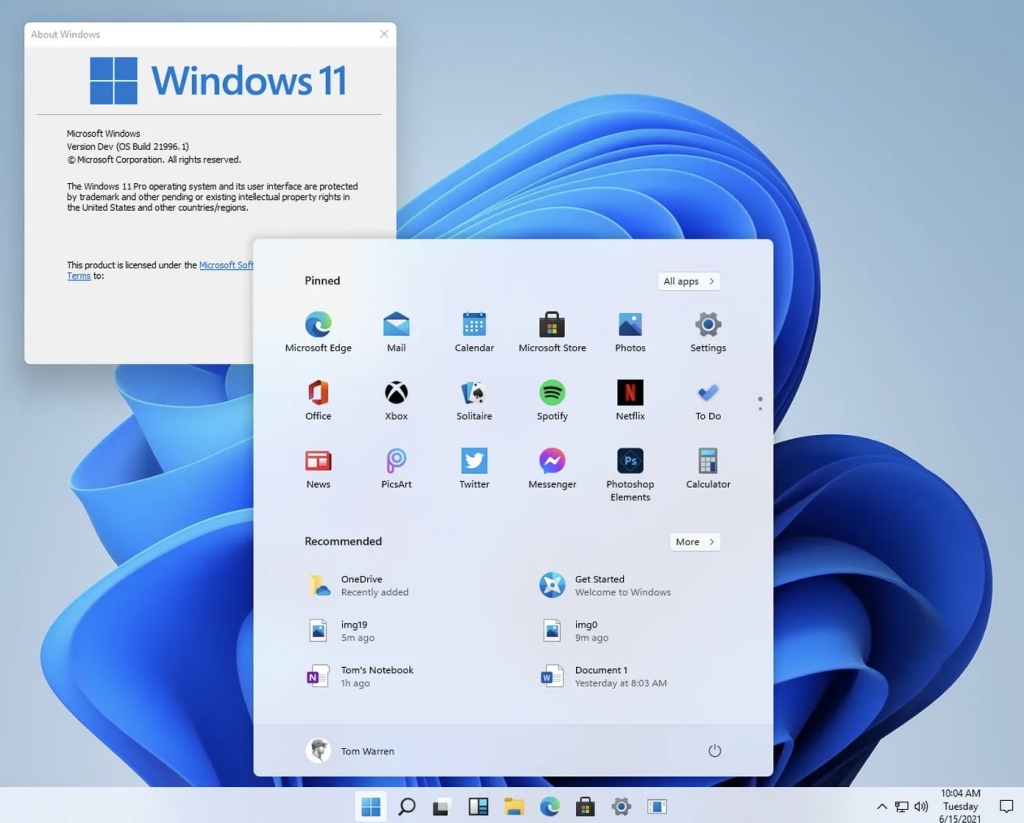
With Windows 11, Microsoft has brought in several changes that promise to change just how you interact with your Windows-based machines. From the inclusion of improved multi-window multitasking to features that improve PC gaming, there’s a lot to be excited about here.
However, arguably the biggest change that’s come to Windows 11 is the fact that it comes with a new, simplified Start menu. This new Start menu comes with an updated Start button that is now positioned at the center of the taskbar, instead of being placed in a corner. This is a design change that makes navigating the operating system so much easier than before.
This new Start Menu is built using Microsoft’s Fluent Design language and as such features rounded corners and big icons. The search bar in the Start Menu is now displayed across the top, which depending on how you use your operating system could be an interesting addition.
Apart from this, Windows 11 also offers what Microsoft calls the Desktops to feature that gives the user the ability to set up and manage multiple iterations of your desktop. It’s a simple and easy feature to use, which when gotten used greatly improves ease of use. This can be accessed by going to this new icon that all Windows users of the past will instantly notice on their home screens. This Task View button sits alongside the Start button and looks like contrasting windows over one another. Hover your pointer over it, and you’ll see a small preview of all the desktops you have open, as well as the option to set up a new one
Should we upgrade to Windows 11?
Well, eventually yes.
The operating system offers a ton of new features and visual upgrades that make it a better, and fresher offering than Windows 10. From the gaming-first features to the redesigned Start menu and Widgets apps, enough is being offered to help you decide to make the move. However, as we found out when running benchmarks on Windows 11, the new operating system, for now, is not without its issues.
There appear to be bugs in the code that are holding back the performance of Windows 11 — even if it’s by a measly 2-3 percent. While that may not be too big a deal for some, in our opinion, it is something that should make us wait for a few weeks at least before moving to Windows 11 as Microsoft should be able to iron out these minor issues with software updates soon enough.
The performance of Windows 11 might be a little slower than windows 10 but initially, in time, this problem will be solved soon. And windows 11 will provide a very pleasing experience to all its users.
Ps: Microsoft is providing a free upgrade to Windows 11 for most of the windows 10 users.
The requirements for installing windows 11 are
- A “compatible” 1 GHz or faster dual-core 64-bit processor from Intel, AMD, or Qualcomm.
- 4GB of RAM.
- 64GB of storage.
- UEFI Secure Boot supported and enabled.
- A Trusted Platform Module (TPM), version 2.0.
- A DirectX 12-compatible GPU with a WDDM 2.0 driver.

You must be logged in to post a comment.